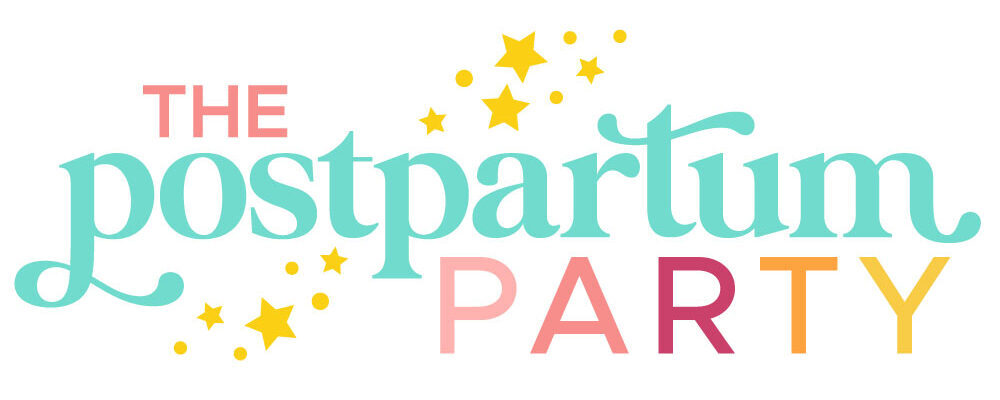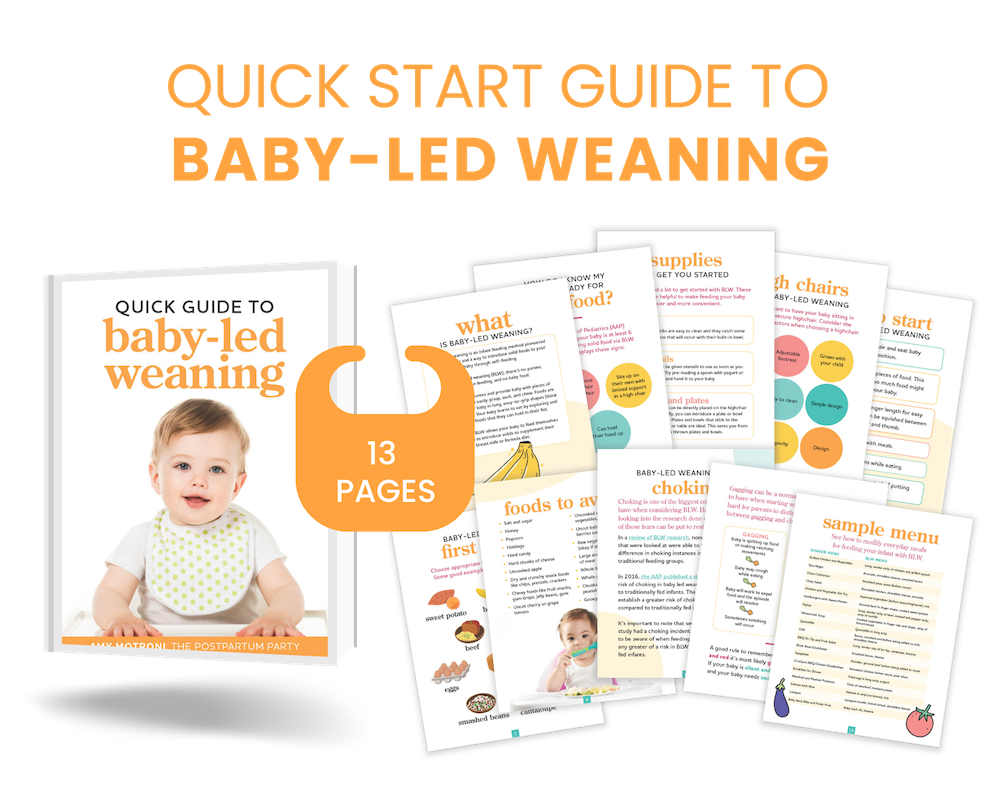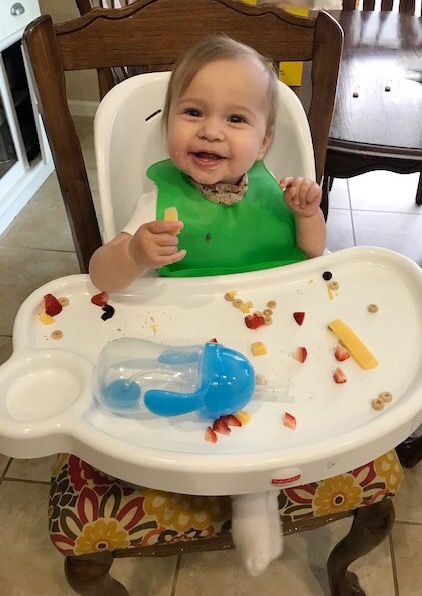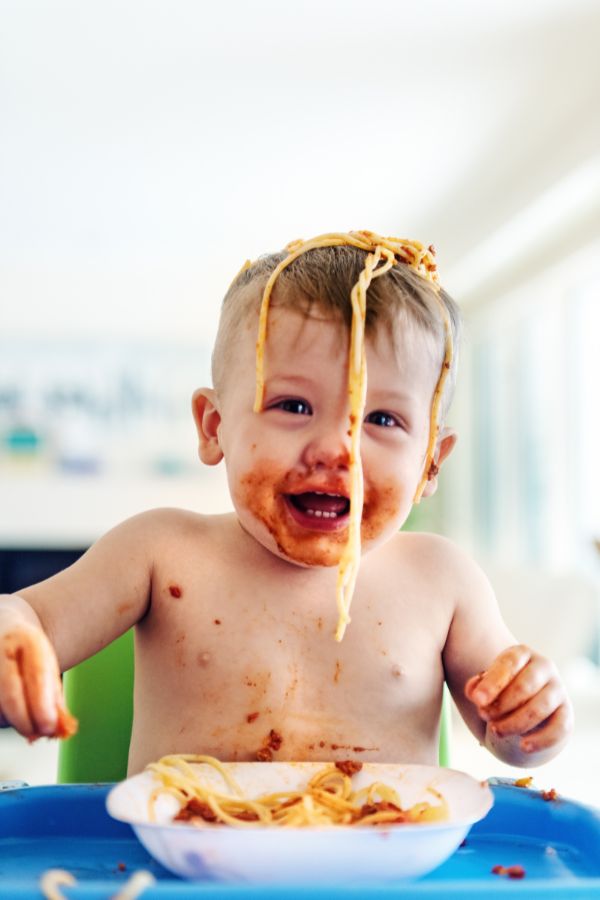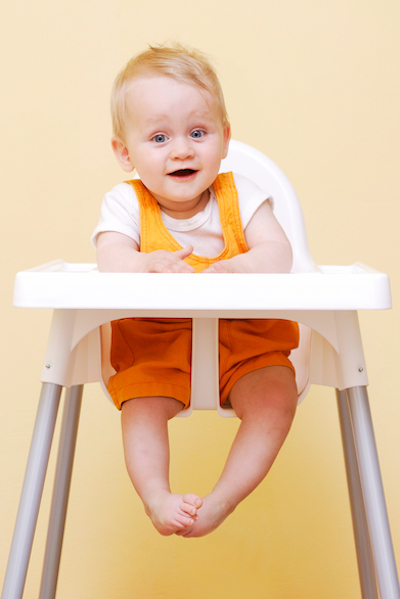Learn the signs of readiness to start baby led weaning as well as tips and tricks to enjoy baby led weaning even more!
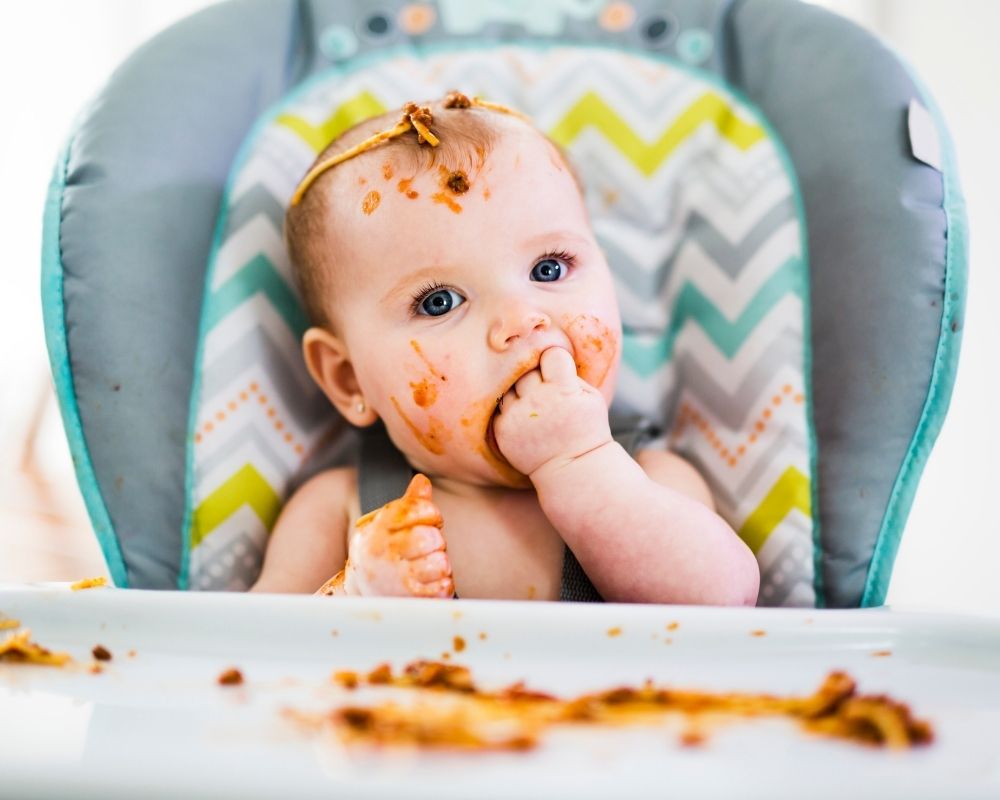
We loved enjoying foods with our daughter when she started eating solids.
She wasn’t able to talk yet, but her facial expressions seemed to say, “Where has this been my whole life?!”
But how do you know when your little one is ready for that first taste of solid food? Let’s talk about introducing solids, baby led weaning, and signs of readiness.
How Do I Know if My Baby is Ready to Start Baby ed Weaning?
Before you start your baby on solids, keep an eye out for signs that they’re ready. Signs of readiness for baby food include:
- Sits up on their own with limited support in a high chair
- Good control of their neck and head
- Readily opens their mouth when solid food is presented
- Can move food from the front of their mouth to the back of the tongue to swallow (no more tongue push reflex)
- Swallows food instead of immediately spitting it back out
- Ability to bring things to their mouth with their hands
- Interested in mealtime and food, trying to grab food from your hands and/or plate
These signs of readiness for solids are backed by the American Academy of Pediatrics (AAP).
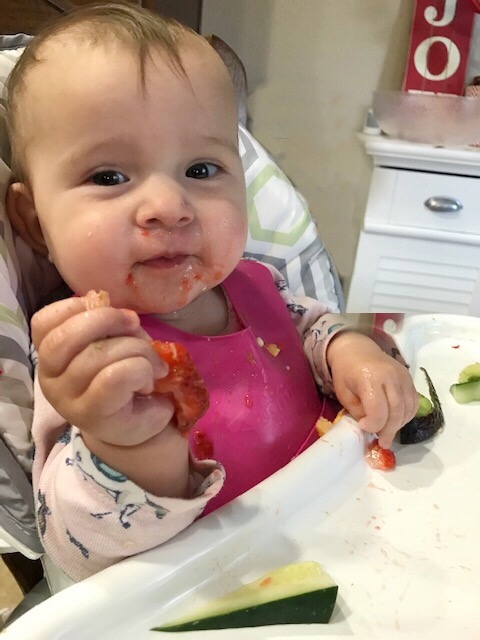
The AAP also recommends continuing with breastfeeding or formula feeding through at least the first birthday. This ensures that your baby is still getting all the nourishment they need while also exploring new foods to build up a balanced diet.
Nourishment isn’t the main purpose of feeding your baby solids in the beginning. When you first introduce solids, it’s their opportunity to learn important eating skills and develop their own relationship with food.
As parents, we should help our babies follow their eating intuition. It’s particularly important to help them learn how to trust their own hunger and fullness cues.
One of the best ways I’ve found to help develop this intuitive eating in little ones is through the baby led weaning process.
Can You Start Purees Before Baby Led Weaning?
When we first started solid food with our daughter, we opted to skip the puree stage and went straight to soft finger foods using the baby led weaning method.
But if you start your baby on purees first, it doesn’t necessarily mean you can’t move on to baby led weaning later. You can leanr more about baby led weaning vs purees and which one is right for your family!
It’s a good idea to start your baby on simple foods that are easy to swallow. Baby food or homemade purees are a common place to start.
Baby-Led Weaning Quick Start Guide
If you’re looking to get started with baby-led weaning, grab the Quick Start Guide to Baby Led Weaning. It has step-by-step instructions on how to start baby led weaning, sample menu ideas, choking prevention tips, and more. Check it out here.
Starting Your Baby on Purees
The signs of readiness for purees are the same as the ones we’ve already discussed. Make sure your baby displays these signs before you start feeding them purees, regardless of whether they’ve already turned 6 months old.
Make sure you introduce a variety of foods, even if they’re just in puree form. Purees are a great way to sneak in a lot of fruits and veggies, so make sure to include these high-nutrition ingredients at each feeding.
Foods that are potentially allergenic like dairy, peanuts, tree nuts, soy, and wheat should be introduced one at a time. That way if your baby has an allergic reaction, you know exactly what the culprit is.
When you feed your baby purees, you’re the one in charge of the spoon. That means it’s your job to pay attention to your baby’s fullness cues.
Signs that your baby is done eating include starting to spit out their food, turning their head away from the food being offered, or refusing to open their mouth for the spoon.
With the introduction of purees, your baby will be learning how to swallow different consistencies, which is great! It’s a very important skill to have.
What they won’t be learning yet is how to chew or gum food—and some parents find that it’s better to teach babies how to chew then swallow. That’s where baby led weaning comes in.
What is Baby Led Weaning?
The process of baby led weaning (BLW) allows your baby to feed themselves as you begin to introduce solids to supplement their breast milk or formula diet.
It’s possible to transition from purees to BLW, or just go straight into baby led weaning when you see signs of readiness. Many parents who choose BLW will completely skip the puree phase and go straight to introducing solids with finger foods.
The philosophy behind BLW is that babies will have a chance to explore food with their own hands. This will help them learn to self-feed from the very beginning, so no need for spoons!
In baby led weaning, foods are introduced to your baby in long, easy-to-grip shapes (think french fry shape but thicker), and served straight on the high chair tray. (See my favorite high chairs for baby led weaning here as well as some of my favorite baby led weaning supplies).
With no plates, bowls, or utensils to throw around, your baby can focus on the yummy stuff with no distractions!
There are plenty of benefits of baby led weaning. One of the most appealing things about it for us was that our daughter could pretty much eat what we were eating starting at six months old.
How to Start Baby Led Weaning
First, your baby should show all of the signs of readiness for baby led weaning that we already discussed.
Second, make sure that the food you’re serving is safe. Choose foods that have a soft, squishy consistency that can be easily “chewed” (gummed) by your baby.
I also have a list of 10 first foods for baby led weaning if you want specific foods and how to serve them.
A good test for food consistency is to see if you can easily squish it between your thumb and forefinger. Steamed carrots or sticks of soft fruit are a good place to start.
Of course one of the biggest hesitations about baby led weaning is choking danger. It’s important to remember that the AAP cautions against feeding your child small and hard foods (like nuts, popcorn, or whole grapes) during the first 2 or 3 years of life.
Third, allow your baby to have control of putting things in their mouth.
You can help them by putting out a few food options on their tray. Remember that too many options can be overwhelming!
But when it comes to getting food into the mouth, let your little one take the lead. If your baby is in charge of putting food in their mouth, they will quickly learn how to control the food as it moves over their tongue and back to their throat to swallow.
Your baby might gag, especially early on in the BLW process. Gagging is often your baby’s way of moving food around in their mouth as they familiarize themselves with solids and new textures.
It never hurts to be familiar with infant CPR just in case, but it’s important to recognize that gagging and choking aren’t the same thing. Don’t panic!
When you introduce solids to your baby, it’s important to be patient, warm, and stick with it. Sometimes it can take many tries over a couple of months to get your little one on board with solids.
The more relaxed you are and the less you try to control the process, the more positive the experience will be for your baby.
Good luck, and bon appétit!
- 25 Magical Disney Pregnancy Announcements - April 24, 2024
- Printable Pregnancy Announcement Scavenger Hunt For Husband - April 24, 2024
- 35 Adorable Ways to Announce your Pregnancy to Your Family - April 24, 2024
